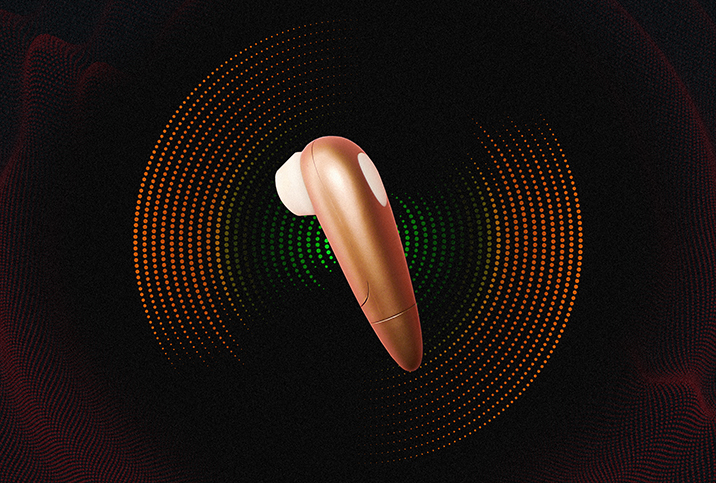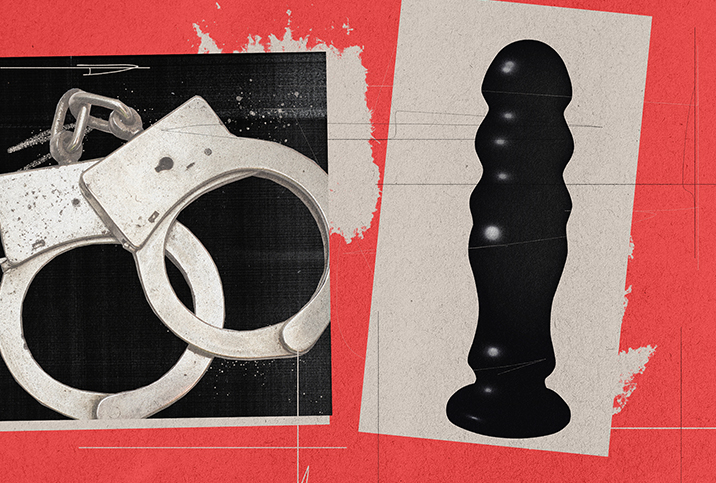For Sex Toys, Purple Is the New Pink

When it comes to sex toys, pink has always been a primary color. Marketing teams have long used the gender associations of pink to signal to their target demographic—women—who dominate sex toy sales. But these days, purple has apparently usurped pink to become the sex toy industry's go-to hue.
Consumers have definitely noticed, and are increasingly curious about what's changed. In a viral tweet last October, journalist Beth Ashley wondered, "Why are so many sex toys purple, is there some sort of science behind purple and horniness[?]" In the replies, people continued to speculate, citing reasons from purple's association with luxury and royalty to the continuing impact of the late superstar Prince.
The truth is a bit more complicated. First of all, purple as a sex toy color is nothing new. Berlin-based creative expert Stu Nugent has been a consultant for sex toy companies like LELO and We-Vibe for more than fifteen years. He explained that while purple has always been a sex toy option offer, consumers are simply noticing it more as online shopping makes all of the color choices more visible.
For those on the production side, it's a very encouraging trend. "The fact that the sex toy industry is now under the kind of scrutiny in which the public is interested in our color decisions is proof positive that we're edging closer into people's everyday lives," said Nugent. "People are treating us like they would any other lifestyle product, and that's exciting."
Chasing the rainbow
While increased visibility may be part of the story, there are indeed market forces at play. A color's popularity can be difficult to gauge in advance, and marketing teams prefer to avoid risks, generally consulting projections based on the sales of other products. The most progressively minded toy companies, nowadays eager to avoid the gendered connotations of pink and blue, find purple to be a midpoint of sorts, and thus a safer bet.
It's a wise consideration to make, given the disdain that some toy collectors have for those colors. Renowned sex blogger Epiphora, who owns more than 800 sex toys, wrote a scathing post in 2013 about the industry's overuse of pink. She called it "the color most likely to send me on a murderous rampage," mainly due to its historic use by marketers to condescend to women customers.
Some collectors, like Cy of the sex blog Super Smash Cache, simply wish that other colors weren't so hard to find. Cy finds herself avoiding both pink and purple because, at this point, they're equally ubiquitous. "Blues are my favorites, and I've definitely gone for green toys because they're uncommon."
Money matters
For toy manufacturers, there are also material costs to consider when weighing what colors to use. Kenton Johnston is the founder and sole artisan behind Funkit Toys, which produces paddles, dildos and other sex toys. A self-professed "huge pigment nerd," Johnston offers a full spectrum of shades mixed from 13 primary colors, including some custom colors that are made to order. He said being a relatively small operation is what gives him this freedom.
"Ultimately, trends in sex toy colors from larger companies are going to be driven by manufacturing limitations and costs," said Johnston. "It costs less to do a single run of purple than two half runs of maroon and teal, not to mention the same saving on separate packaging, separate barcodes, and separate inventory tracking."
Even the large companies that successfully incorporate "nontraditional" sex toy colors into their swatches can find themselves at the mercy of marketers. For instance, German toymaker Fun Factory has found that their vulva toys sell better in green, yellow and orange than they do in pink and purple.
"We know from our direct-to-consumer sales that consumers do want color diversity," said Kristen Tribby, global head of marketing and education for Fun Factory. And yet, she continued, "B2B [business to business] buyers continue to define the industry by making a 'safer choice' and only ordering the conventional colors."
This behavior, of course, is something of a self-fulfilling prophecy. When retailers order the current popular color, be it pink or purple, marketers assume it's legitimately popular, and put their advertising might behind it, which further conditions consumers to expect and demand that color. Then, a color trend is born.
So is purple actually popular right now, or have sex toy marketers simply deemed it the next safe bet? It's hard to say, but one thing's for sure: Eventually, the color wheel will roll around again with the next one.


















